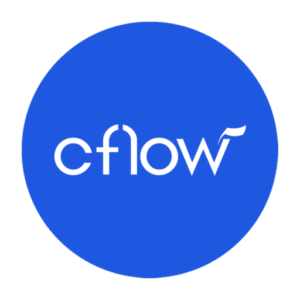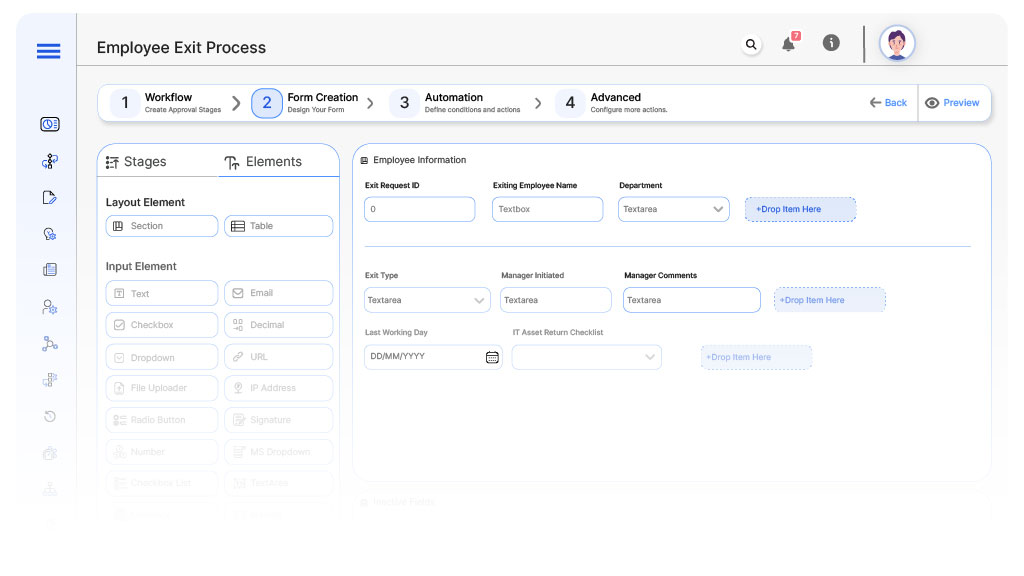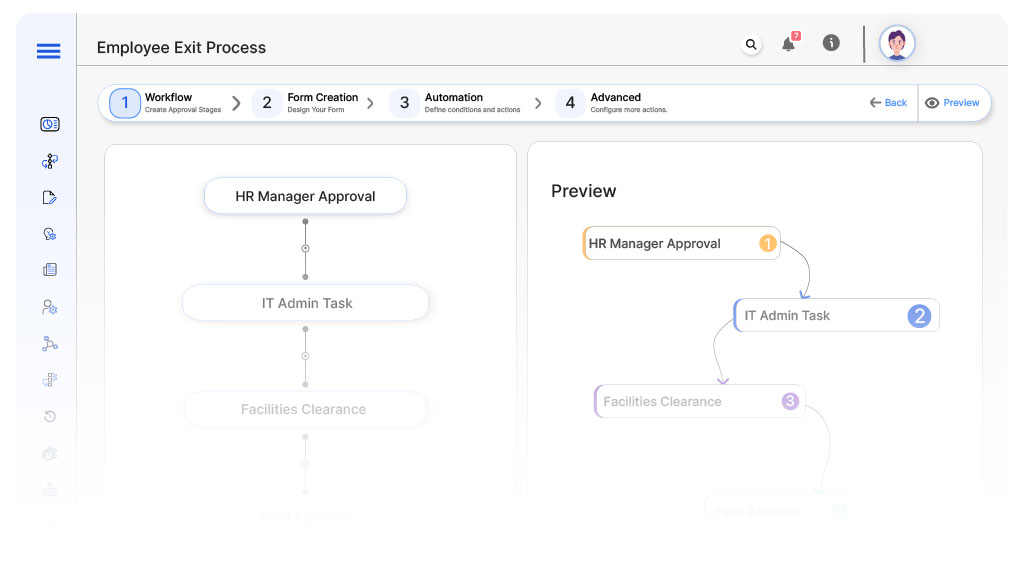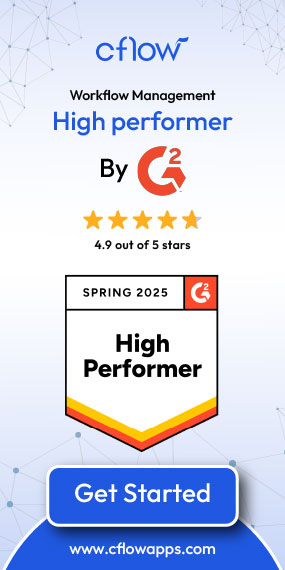- Cflow
- Employee Exit Process
How to Automate Employee Exit Process with Cflow

Clow Editor Team

Table of Contents
What Is Employee Exit Process?
The Employee Exit Process is a formalized set of steps that organizations follow to ensure a smooth and secure transition when someone leaves the company. It begins the moment HR, a manager, or the exiting employee initiates a resignation or termination request. At its core, the process covers everything from notification to IT for account deactivation, to Finance for final paycheck processing, to Facilities for asset recovery and workspace clearance. In plain terms, think of offboarding like a relay race: one department hands a baton (the exit request) to the next department in line, each performing a predefined task. Recent industry research shows that structured offboarding can reduce security incidents by up to 45%. Without a standardized workflow, it’s easy for steps to be overlooked—whether it’s updating access rights, retrieving hardware, or collecting exit feedback.
A well-defined Employee Exit Process serves multiple purposes: it protects sensitive data, ensures compliance with labor laws, and preserves goodwill with departing employees. By capturing every task, communication, and approval in a single system, HR teams can eliminate inconsistencies, prevent costly mistakes, and maintain an audit trail for future reference.
Why Employee Exit Process Is Important for HR Teams
Security & Compliance
Employee Experience & Reputation
Knowledge Transfer & Continuity
You can get started with Cflow for free
Key Benefits of Automating Employee Exit Process with Cflow
- Centralized Offboarding Checklist : Cflow’s customizable form builder consolidates every exit task—asset returns, system deactivations, final paperwork—into one place. A single offboarding checklist ensures no step is missed, and HR can view progress at a glance. Forms can include dynamic sections for different exit types (voluntary vs. involuntary), so all stakeholders know exactly what’s required without chasing email threads or scattered spreadsheets.
- Dynamic Task Assignments : Based on the selected department and exit type, Cflow automatically assigns tasks to IT, Finance, Facilities, and Legal. If an employee is remote, Cflow triggers additional steps for shipping device return labels. Conditional logic hides irrelevant tasks—so the IT Admin only sees technical deactivation tasks and the Facilities Coordinator only sees asset pickup tasks—minimizing confusion and keeping each user focused on their responsibilities.
- Multi-Stage Approvals : Cflow’s process flow engine routes the exit request in stages: first to HR for basic data verification, then to IT for account deactivation, and finally to Finance for final settlement approval. Each approver receives a notification and can approve/reject with comments. If HR rejects, the request loops back for corrections. On approval, the next stage is automatically triggered, eliminating manual email routing and ensuring each step is signed off in the right sequence.
- Real-Time Notifications : At every stage, Cflow sends email and optional SMS alerts to stakeholders. For example, once HR approves, IT Admin receives a “Pending IT Tasks” notification with a link to view asset return checklists. If Finance doesn’t act within 24 hours, Cflow automatically escalates a reminder to HR and the Finance Manager. These real-time notifications ensure no approver remains idle, preventing bottlenecks and accelerating the entire offboarding timeline.
- Audit Trail & Compliance : Cflow logs every action—who approved what, when, and with what comments. This audit trail is critical for compliance with laws like Sarbanes-Oxley, GDPR, and industry-specific regulations. Any disputes over exit tasks can be resolved quickly by reviewing the timestamped activity log. Cflow also retains past request data in searchable archives, so HR can generate compliance reports or respond to auditing requests in minutes rather than hours.
- Customizable Exit Surveys : Because offboarding can provide valuable feedback, Cflow lets HR include an optional survey for departing employees. Questions can be tailored—“What could we have done differently?” or “Would you rejoin us in the future?” The survey response is recorded automatically, and HR receives an alert for negative feedback. This feature helps organizations identify retention risks or process improvements based on honest exit insights, all without additional manual follow-up.
- Mobile Accessibility : HR managers, IT admins, and finance approvers can view, approve, or reject exit tasks on their smartphones or tablets. Cflow’s responsive design ensures that busy managers traveling or working remotely never miss an approval. Even the exiting employee can confirm asset handover or complete a brief exit survey from their mobile device, speeding up data collection and ensuring a smooth offboarding, regardless of location or device.
Get the best value for money with Cflow
User Roles & Permissions
Exiting Employee
Responsibilities: Initiates the exit request by completing the offboarding form, selects exit type and last working day, and provides initial data such as reason for leaving and knowledge transfer details. The exiting employee must acknowledge company property return and optionally complete an exit survey.
Cflow Permission Level: Submit Form
Access Control: “Employees” group; can create and view only their own exit requests.
HR Manager
Responsibilities: Reviews the submitted exit request for completeness, verifies employee details, confirms compliance with notice periods, and approves or rejects to trigger next steps. HR Manager also monitors overall offboarding progress and resolves any form-related queries.
Cflow Permission Level: Approve/Reject
Access Control: “HR Team” group; full access to pending exit requests, editing fields, and configuring routing.
IT Admin
Responsibilities: After HR approval, IT Admin deactivates system access (email, VPN, drives), collects company devices, and confirms credential removal. Tasks are closed after completion.
Cflow Permission Level: Task Owner
Access Control: “IT Team” group; can update only IT-related tasks, no access to HR or Finance stages.
Finance Approver
Responsibilities: Calculates final payout, reconciles unused leave, processes settlement, and issues last paycheck. Can request clarifications if discrepancies are found.
Cflow Permission Level: Approve/Reject, Data Entry
Access Control: “Finance Team” group; can view exit requests after IT stage, input settlement data.
Facilities Coordinator
Responsibilities: Manages asset collection—laptop, badge, keys—and workspace handover. For remote employees, coordinates return shipping or courier pickup.
Cflow Permission Level: Task Owner
Access Control: “Facilities” group; sees only office-based or remote requests needing shipping.
Get the best value for money with Cflow
Form Design & Field Definitions

Field Label: Exit Request ID
Type: Autonumber
Logic/Rules: Always visible; generates unique ID with prefix “EX-” followed by 4-digit sequence (e.g., EX-0001).
Auto-Populate Rules: System-generated on form creation; no user input.
Field Label: Exiting Employee Name
Type: Text (Autofill)
Logic/Rules: Visible on form load. Read-only if employee is logged in.
Auto-Populate Rules: Auto-filled from user profile if employee is logged in.
Field Label: Department
Type: Dropdown (HR, Finance, IT, Sales, Marketing, Operations, Others)
Logic/Rules: Visible on form load. Determines department-specific tasks.
Auto-Populate Rules: Auto-select based on user’s department tag in profile.
Field Label: Exit Type
Type: Dropdown (Voluntary, Involuntary)
Logic/Rules: Show “Exit Survey” if Voluntary; show “Legal Clearance” if Involuntary.
Auto-Populate Rules: None; user selects.
Field Label: Manager Initiated?
Type: Text Area
Logic/Rules: Visible only if “Manager Initiated” is checked. Mandatory if shown.
Auto-Populate Rules: None.
Field Label: Manager Comments
Type: Text Area
Logic/Rules: Visible only if “Manager Initiated” is checked. Mandatory if shown.
Auto-Populate Rules: None.
Field Label: Last Working Day
Type: Date Picker
Logic/Rules: Must be a future date within 30 days of request.
Auto-Populate Rules: Default to +30 days from submission; user editable.
Field Label: IT Asset Return Checklist
Type: Repeater (Document Name, File Link, Recipient)
Logic/Rules: Visible if Department ≠ HR. Mandatory for technical/specialized roles.
Auto-Populate Rules: None; employee fills in.
Field Label: Knowledge Transfer Documents
Type: Repeater (Document Name, File Link, Recipient)
Logic/Rules: Visible if Department ≠ HR. Mandatory for technical/specialized roles.
Auto-Populate Rules: None; employee fills in.
Field Label: Final Settlement Estimate
Type: Calculated Field (Currency)
Logic/Rules: Appears after HR approval. Sum of leave + expenses – advances.
Auto-Populate Rules: Pulls from HRIS: Unused Leave & Daily Rate; auto-calculated.
Field Label: Reason for Exit
Type: Text Area
Logic/Rules: Always visible. Mandatory if Exit Type is Involuntary.
Auto-Populate Rules: None.
Field Label: Exit Survey (Optional)
Type: URL/Button Link
Logic/Rules: Visible only if Exit Type = Voluntary. Links to external survey.
Auto-Populate Rules: None.
Field Label: Legal Clearance Required
Type: Dropdown (Yes/No)
Logic/Rules: Visible if Exit Type = Involuntary. “Yes” triggers Legal Review stage.
Auto-Populate Rules: None.
Field Label: Facilities Clearance (Office-Based Only)
Type: Checkbox (Yes/No)
Logic/Rules: Visible if “Department” = office location or “Remote Location” = No. Seen after IT tasks complete.
Auto-Populate Rules: None.
Discover why teams choose Cflow
Approval Flow & Routing Logic

Submission → HR Manager Approval
Status Name: Pending HR Approval
Notification: “Hi [HR Manager], John Doe (EX-0001) has submitted an exit request. Please review and approve.”
On Approve: Moves to IT Admin Task; Exit Type and Department determine next node.
On Reject: Returns to Exiting Employee with HR comments for correction.
Escalation: If no action within 24 hours, send reminder to HR Manager and escalate to HR Director.
HR Approval → IT Admin Task
Status Name: Pending IT Tasks
Notification: “Hello [IT Admin], exit request EX-0001 for John Doe is approved by HR. Please deactivate system access and collect assets.”
On Approve: Move to Finance Final Settlement.
On Reject: Send back to HR Manager with IT comments.
Escalation: If no update in 24 hours, notify IT Manager and HR Manager.
IT Admin Task → Facilities Clearance (Conditional)
Condition: Department = Office-Based OR Remote Location = No
Status Name: Pending Facilities Clearance
Notification: “Hi [Facilities], John Doe (EX-0001) needs workspace clearance and key return. Please confirm.”
On Approve: Move to Finance Final Settlement.
On Reject: Return to IT Admin to resolve asset pickup issues.
Escalation: If no action in 24 hours, notify Facilities Lead and HR Manager.
IT Admin Task → Finance Final Settlement (If No Facilities Required)
Status Name: Pending Finance Settlement
Notification: “Hello [Finance Approver], exit request EX-0001 for John Doe requires final settlement calculation of £2,500. Please process payment.”
On Approve: Move to Exit Complete.
On Reject: Send back to IT Admin or HR Manager based on error type.
Escalation: If no action in 48 hours, notify Finance Manager and HR Manager.
Finance Final Settlement → Exit Complete
Status Name: Exit Complete
Notification: “John Doe’s exit request EX-0001 has been finalized. All tasks completed; offboarding is closed.”
On Approve: System archives the request.
On Reject: Returns to Finance Approver for correction.
Escalation: N/A – Final stage.
Implementation Steps in Cflow
1. Create a New Workflow
2. Design the Form
3. Set Up User Roles/Groups
- Employees
- HR Team
- IT Team
- Finance Team
- Facilities
4. Build the Process Flow Diagram
5. Configure Notifications
6. Set Conditional Logic
If Remote Location = Yes, skip the Facilities node.
7. Save and Publish Workflow
8. Test with a Sample Request
9. Adjust Based on Feedback
10. Go live
user groups:
HR Managers
IT Admins
Finance Approvers
Facilities Coordinators
Train each stakeholder on their responsibilities in Cflow.
Example Journey: “John’s Exit Request”
FAQ's
Typically, you can configure the form, user roles, and workflow in Cflow within 1–2 hours. Testing and minor adjustments may take up to a day. Once published, live requests can be processed immediately.
Yes. In Cflow’s Settings → User Roles, you can update user groups and add new approvers (e.g., Legal or Compliance) at any time. The workflow will automatically route requests to the updated user list.
Absolutely. Cflow supports API integrations with popular HRIS systems (e.g., BambooHR, Workday). You can configure auto-population rules so employee name, department, and leave balances sync directly into the exit form.
Yes. Cflow’s mobile-responsive interface allows HR managers, IT admins, and other stakeholders to approve tasks and update form fields from any smartphone or tablet—no separate app download needed.
Try Cflow for free, no credit card needed


Employee Exit Process

Employee Exit Process

Employee Exit Process

Employee Exit Process

Employee Exit Process

Employee Exit Process

Employee Exit Process

